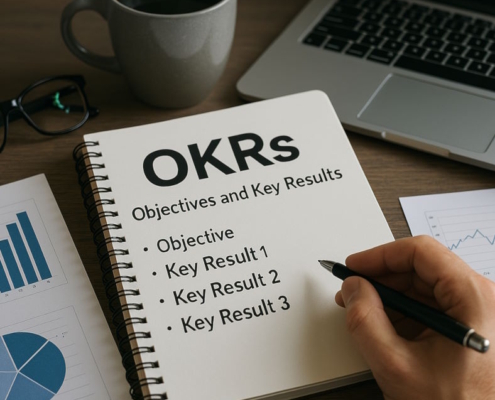eBay vs Amazon
A comparison between eBay and Amazon on their pros and cons of selling online.
By Brad Nakase, Attorney
Email | Call (888) 600-8654
Get Smarter: Search my blogs
What is the difference between eBay and Amazon?
Whether you want to sit comfortably at home and list things for sale online, drop packages off in the mail, or have money directly sent to you, using Amazon or eBay is easier than old-fashioned yard sales. But how do you know which e-commerce giant to use? Before getting started making easy cash, you should first understand the differences between the sites.
eBay
Since the company started in 1995, eBay has purchased quite a few businesses, including Gumtree, PayPal, and StubHub. As of 2022, the site has 138 million users.
How does the company make money? The biggest way it accomplishes this us by implementing transaction fees. These eat into a seller’s margin with a 2.99% + $0.49 fee for every debit/credit card payment processed.
eBay’s Marketplace is where sellers may post items for auction or sale. The marketplace also charges certain users an insertion fee to post according to the item’s starting bid. There is also a final value fee that comes into play once the item is sold. These days, every seller on the site is offered several free postings before the insertion fees are activated. For instance, if an individual has an eBay store, he or she will get more fee-less postings every month. The sellers who do not have a store subscription will receive less. That said, eBay charges all sellers a final value fee. This final value fee is based on the item category and value of the sale plus $0.30/order.
For those sellers who are very active on the site, eBay offers packages that supply sellers with several free listings for a monthly subscription charge. Included is a lower insertion fee for those who surpass their allotment, as well as a lower range of final value fees. The Marketplace allows sellers to upgrade their posts or list their items at a fixed price. This includes better placement in search results and additional pictures. Fixed price listings incur the same fees as auction listings.
Amazon
Amazon’s fee structure is more complex than that of eBay. The site has two choices for sellers, who may choose to post either as Professionals or Individuals. Amazon charges Individuals $0.99 per item to list in addition to an 8%-45% referral fee that depends on the listing category of the item.
In addition to the above, there is a variable closing fee. For media, books, video, and DVD items, this is an established $1.80 per item. Other items incur a variable closing fee that is determined by the weight of the item.
Sellers have a choice of several categories in which to post their items. These range from books to major appliances to beauty products. Some of these require Amazon’s approval to post. Sellers in the books and media category have their shipping rates established and collected by Amazon. The fixed rates are good for buyers who understand that when they buy from Amazon, the total cost can be easily determined without searching for particular sellers’ shipping costs.
Amazon permits individuals selling products that are already on the site to list the product by entering its SKU or UPC number. This system reduces the time a seller requires to prepare a posting since the needed information has already been supplied by employees at Amazon. Regular bank transfers ensure the seller is paid, and sellers also benefit from Amazon’s Fraud Protection service.
It should be noted that both Amazon and eBay offer seller protection services in addition to the ability to contact a buyer directly in the event of a problem. Both companies provide customer support, business startup lawyer, and tutorials to support beginner sellers.
Key differences
As the original auction website, eBay used to have expensive and complicated selling fees. Ever since they have streamlined their fees, their structure is much easier to understand. However, it still is dependent on a multi-leveled schedule that can change according to seller status and listing category. Amazon’s fee structure can also be frustrating to understand.
That said, Amazon does a few things better than eBay. For one, the site does well to make the buyer feel they are purchasing directly from Amazon. Seller’s products are listed alongside Amazon’s. Buyers can purchase items using “1-click buying.” As opposed to PayPal and eBay, buyers can buy their item without ever leaving the Amazon site. Amazon’s Fulfillment service means that sellers can even have their products stored and shipped straight from one of Amazon’s warehouses. However, a seller may prefer eBay for the ability to personalize and customize listings. On eBay a seller can post colorful, catchy ads, which may attract more customers than the neutral listings that predominate on Amazon.
Payment methods
On Amazon, there is a multi-step process for setting up a seller’s account. Users are signed up automatically for Fulfillment by Amazon and a Professional account. Account information is loaded based on a user’s existing account, if they have one. There is also a section for Tax Identity Information.
The process of setting up an account is simple on eBay. You simply open an eBay account and begin selling. Both Amazon and eBay users are paid via direct deposit.
Pros and Cons of selling on eBay
Selling items on eBay can be a simple, convenient way of making money. Perhaps there are things you no longer use, such as toys or collectible items. You might also want to sell items that you made by hand, like Christmas decorations or Halloween costumes. Most sellers and shoppers are familiar with eBay, and its search function makes it easy to find what you are looking for.
However, there are certain disadvantages to using eBay. For one, you will have to pay fees to eBay for using the site. You also do not have much control over how items are sold. You could also end up with payment problems if customers do not pay, and will need to hire a commercial litigation attorney in Los Angeles to help with the business dispute.
Here is a brief summary of the pros of using eBay:
- The site has a global reach
- Selling on the site is a great way to make money on the side
- Setting up an account on the site is fairly easy
And here are some cons:
- There are fees, and fees structures may change over time
- There is the risk of not getting paid for items if a customer does not pay
- You have to compete with other sellers
Pros and Cons of selling on Amazon
Amazon is a giant in ecommerce, as it reaches millions of customers. This offers online sellers the potential of high traffic. If you learn how to tag your items, they could appear in recommended lists.
If you are running a small business, Amazon can also store your items in their huge warehouses. This is a major upgrade over paying for storage or using your garage to store products. Amazon Prime customers are most likely to do most of their shopping on Amazon, so if you can reach those individuals, you will get more sales.
Similar to eBay, the fees are a negative. You also do not get to interact with your customers, as you would be able to on eBay. Also, your business and products are enclosed within Amazon, so there is no opportunity to build a brand.
Here are the pros of selling on Amazon:
- The site is trusted and beloved by online customers
- The site reaches millions of people
- Tagged products show up on recommended lists
Here are the cons of selling on Amazon:
- Your items might not be visible in an ocean of products
- Amazon does not encourage brand growth
- The site has high fees
Which is safer to use?
While e-commerce can be risky for sellers no matter what, Amazon has more safeguards in place to protect the seller. This is because you do not have to interact with buyers. Amazon is in charge of the payments. That said, both eBay and Amazon have protections in place to defend sellers.
Which is bigger?
Amazon boasts more potential customers, and the site offers more products than eBay.
How many sellers are on Amazon and eBay?
As of 2021, there were about seven million sellers based in the U.S. on eBay. Amazon has around six million global sellers.
How many sellers are on eBay and Amazon?
As of 2021, there were about 159 million eBay customers around the world. Amazon enjoys over 300 million customers around the world.
Which site to use?
In the end, whether you choose to sell on eBay or Amazon, you should be sure to do your research. The sites use different pricing schemes, so an item thar may sell for cheap on Amazon could incur higher fees on eBay. This higher cost might be due to a niche audience or the need for customer service. There are pros and cons for both sites, so a seller should think about their items and personal goals. If you want to build a brand, eBay would be a better fit. If you want storage for your merchandise, Amazon would be the better choice.
Have a quick question? We answered nearly 2000 FAQs.
See all blogs: Business | Corporate | Employment Law
Most recent blogs:
Contact our attorney.































